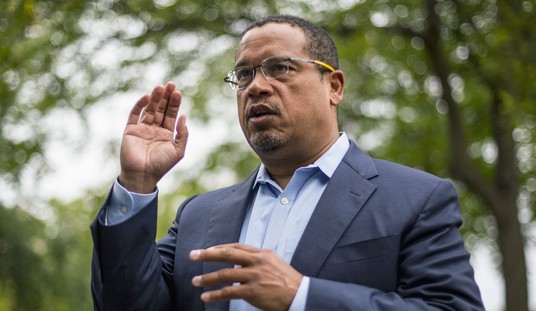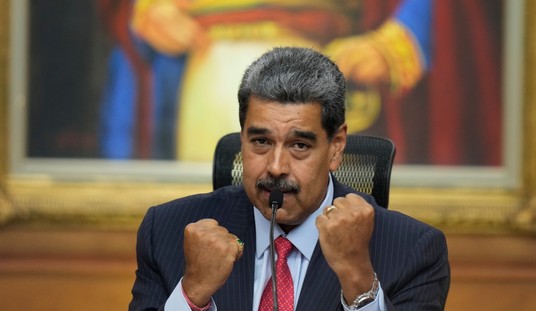A leftover from yesterday. He’s stating the view here of virtually every scientist who’s commented publicly on next steps, but he’s also probably doing more harm than good by doing so. And you would think he’d realize it.
Social distancing bends the curve and relieves some pressure on our heroic medical professionals. But in order to shift off current policies, the key will be a robust system of testing and monitoring – something we have yet to put in place nationwide. https://t.co/evkTSrzReB
— Barack Obama (@BarackObama) April 8, 2020
Trump chimed in a half hour after that was sent with this, which may or may not have been a response to O but was most definitely weird per the “quickly forgotten” part:
https://twitter.com/realDonaldTrump/status/1247900240155295745
I said last night in this post that Obama’s in a tricky position in terms of how he plans to campaign for Biden. If he attacks Trump he risks playing into the president’s hands, transforming the race from a “Trump vs. daffy old nice guy” referendum into a “Trump vs. Obama” choice. No one but no one can ignite Republican turnout like O can, as we saw in 2010 and 2014. And Obama realizes that, which is why he laid low during the 2018 midterm election. He understands his effect on righties.
So what’s he doing here taking sides in the great “when to reopen?” debate, knowing that that debate’s bound to get exceedingly stupid with partisanship anyway as we approach May 1? Democratic governors and voters will ignore Trump’s guidance no matter what and follow whatever the health experts are saying. Obama’s tweet adds nothing to their calculations, but it may inadvertently push some Republicans who are trying to decide what to do into the “reopen ASAP” camp. That’s dumb, but negative hyperpartisanship is a fact of life. “Follow the economists or follow the scientists?” is a hard question (although most economists outside the White House also seem to think containment of the outbreak is an absolute prerequisite to reopening for business). “Follow Trump or follow Obama?” is an easy one.
Axios reports today that some Trump aides are indeed eyeing May 1 as the date on which some parts of the country might reopen:
President Trump’s aides, encouraged by virus data showing fewer deaths than once projected, are working behind the scenes to deliver on his vow to reopen America “sooner rather than later.”…
That energy is especially coming from some of the more economic and politically minded aides. “We are looking at when the data will allow the opportunity to reopen,” said the official…
Public health officials are very wary of optimistic talk of an imminent reopening from some members of the White House economic team.
A senior HHS official said: “Talk of reopening the American economy — when we don’t fully understand the virus, and can’t even crank our own domestic assembly lines to make diagnostic tests, respirators, and ventilators — isn’t just myopic, it’s flat out ridiculous.”
Trump is reportedly planning to announce a second task force soon that’s focused on reopening the country for business. It’ll be an economic-focused parallel to the coronavirus task force, with Mark Meadows as chair and Steve Mnuchin, Larry Kudlow, and Kevin Hassett involved. Ideally the two groups will complement each other; the main task force could set safety benchmarks for resuming business, for instance, and the economy task force could identify communities that meet those benchmarks. But Trump likes his underlings to compete with each other, so the task forces will probably end up vying for influence over him. And since he already flirted with the now-abandoned idea of opening on Easter, it’s a cinch that he’ll side with the economy task force over the Pence/Fauci/Birx shop to the extent they conflict. Meadows had better be careful: If he recommends reopening too soon and we end up with resurgent local outbreaks that spin out of control, he’ll be the scapegoat.
This long-term forecast from economist Tyler Cowen seems plausible to me:
I don’t view “optimal length of shutdown” arguments compelling, rather it is about how much pain the political process can stand. I expect partial reopenings by mid-May, sometimes driven by governors in the healthier states, even if that is sub-optimal for the nation as a whole. Besides you can’t have all the banks insolvent because of missed mortgage payments. But R0 won’t stay below 1 for long, even if it gets there at all. We will then have to shut down again within two months, but will then reopen again a bit after that. At each step along the way, we will self-deceive rather than confront the level of pain involved with our choices. We may lose a coherent national policy on the shutdown issue altogether, not that we have one now. The pandemic yo-yo will hold. At some point antivirals or antibodies will kick in (read Scott Gottlieb), or here: “There are perhaps 4-6 drugs that could be available by Fall and have robust enough treatment effect to impact risk of another epidemic or large outbreaks after current wave passes. We should be placing policy bets on these likeliest opportunities.” We will then continue the rinse and repeat of the yo-yo, but with the new drugs and treatments on-line with a death rate at maybe half current levels and typical hospital stays at three days rather than ten. It will seem more manageable, but how eager will consumers be to resume their old habits? Eventually a vaccine will be found, but getting it to everyone will be slower than expected. The lingering uncertainty and “value of waiting,” due to the risk of second and third waves, will badly damage economies along the way.
Some studies have already recommended a “yo-yo” approach of intermittent social distancing to contain the epidemic. People stay home for a month or two until the fire dies down, then reemerge for a month or two as the fire starts burning again, then back in the house, etc. It seems unimaginable that the public would tolerate being ordered to do that, but the yo-yo Cowen’s describing may not come top-down, via lockdowns from local officials. It may be driven bottom-up, with locals retreating into isolation in fear as news spreads that epidemic is beginning to rage again in their communities. Demand will fall off, hurting local businesses. Some may shut their doors of necessity before the order finally comes from the mayor or governor to lock down for awhile.
How states are going to manage this when they’re implementing different policies, I have no idea. Cowen’s point about an incoherent national policy had me thinking this morning about incoherent *regional* policies. For instance, what will Louisiana and Mississippi do next month when the White House starts encouraging rural areas to open back up? Louisiana is experiencing one of the nastiest outbreaks in the country; they may want to be conservative in not reopening before the fire is out as completely as possible. Mississippi’s governor was one of the last in the country to issue a stay-at-home order, though. He’ll be eager to reopen ASAP. If he does, what should the government of Louisiana do? They’re at risk of a new outbreak being seeded right next door. Some Louisianans will doubtless want to travel to Mississippi either for work or to enjoy some degree of normalcy that their home state lacks. Some will infect Mississippians; some will be infected by Mississippians before returning home. What’s the solution? The governor of Louisiana probably can’t constitutionally ban travel to or from another state, but if he doesn’t then he’s at the mercy of Mississippi’s decision to reopen early. What do we do about that?
Exit question: If scientists agree basically unanimously that we need more accessible testing nationwide to let us detect new outbreaks before we reopen the economy, why are the feds cutting funding for some test sites?








Join the conversation as a VIP Member